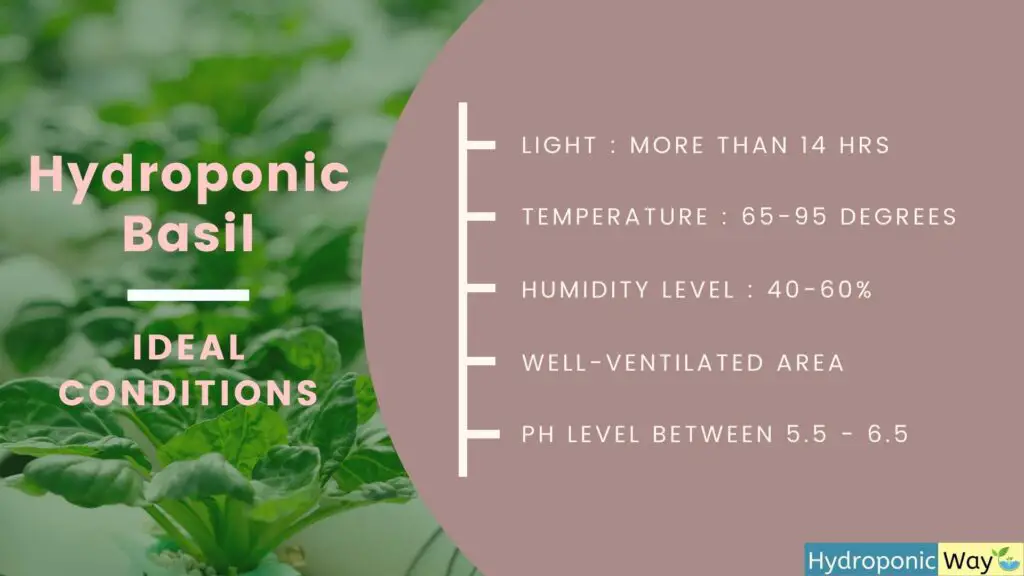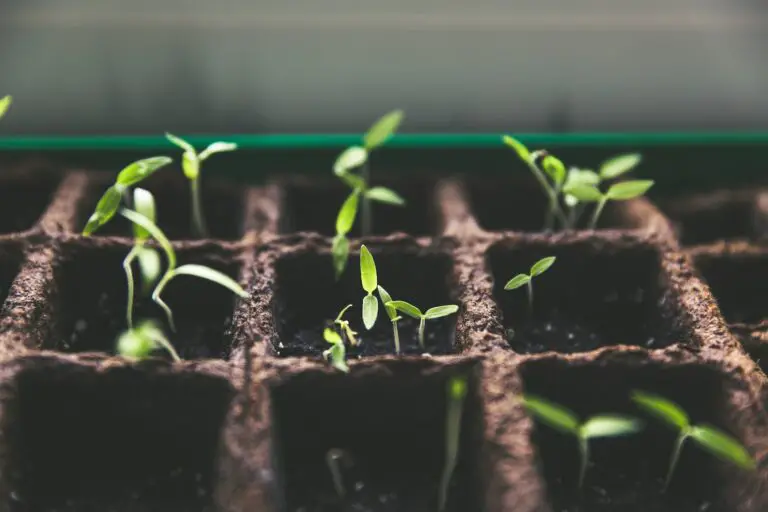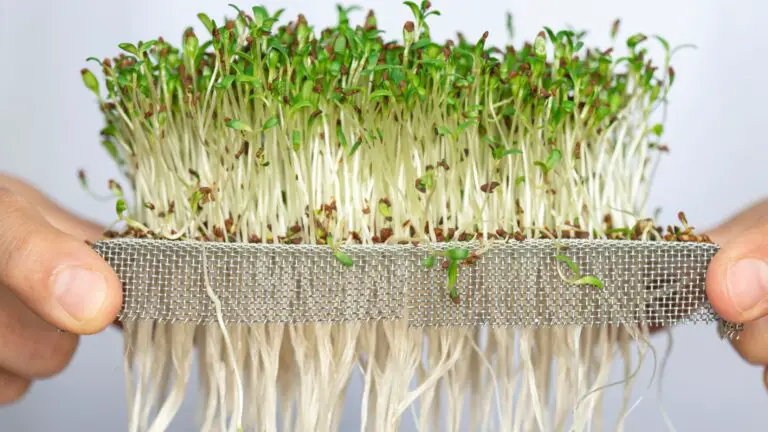How to Grow Hydroponic Basil: A Step-by-Step Guide
Disclosure: Your purchases through our links may earn us a small commission, supporting our site’s ability to provide valuable information to our readers. Rest assured, it won’t impact your price. Thank you for your support.
If you love the taste of fresh basil, you’ll be excited to learn how easy it is to grow your hydroponic basil.
Basil is a great herb to grow in a hydroponic garden because it thrives in warm weather and has a relatively short growing season.
This step-by-step guide will show you how to set up your hydroponic basil garden.
What Are Some of the Benefits of Growing Basil Hydroponically?
There are several benefits of growing basil hydroponically, including:
- It is a popular herb to grow in a hydroponic garden because it thrives in warm weather and has a relatively short growing season.
- It is also a fairly easy herb to grow, making it a great choice for those new to hydroponics.
- It can yield up to three times as much as basil is grown in soil.
- It requires less water and fertilizer than basil grown in soil.
- Hydroponic gardens take up less space than traditional gardens, ideal for small homes or apartments.
- Growth rates are quicker than traditional plant growth.
- In hydroponics, the growing environment is controllable.
- Fewer pests and diseases.
What Are the Health Benefits of Basil?
Basil is not only a delicious herb to use in cooking, but it also offers several health benefits.
- Basil is rich in antioxidants and vitamins A, C, and K.
- Additionally, basil has been shown to have antimicrobial properties, making it effective against certain bacteria and fungi.
What Is the Best Growing Medium for Growing Basil Using Hydroponics?
There are a variety of growing mediums that you can use for hydroponics, including hydroton clay pellets, perlite, and vermiculite.
However, the best growing medium for basil is hydroton clay pellets.
- They provide good drainage and aeration while still retaining enough water to keep the roots moist.
- Additionally, hydroton clay pellets are pH neutral and do not contain any nutrients that could potentially harm your plants.
Which Hydroponic System Works Well for Hydroponic Basil?
The best hydroponic system for basil is the Deep Water Culture (DWC) system.
This is because it is a simple and efficient system that is easily set up at home. The DWC system consists of a container with nutrient solution, net pots filled with growing media, a watertight tray, an air pump, an air stone, and a light source.
NFT hydroponic system, and Kratky also works quite well.
Related:
How to Set Up a Deep Water Culture (DWC) Hydroponic System?
How does Deep Water Culture (DWC) Hydroponic System Works?
10 Tips for the Deep Water Culture (DWC) Hydroponics Systems (DIY)
How to Set Up a Nutrient Film Technique – NFT Hydroponics?
What Are the Ideal Conditions for Growing Hydroponic Basil?
The ideal conditions for growing basil using hydroponics are:
– A location that receives more than fourteen hours of light per day.
– A temperature between 65-95 degrees Fahrenheit.
– A humidity level between 40-60%.
– A well-ventilated area.
– A pH level between 5.5 and 6.5

How to Set up That Hydroponic System Step by Step?
To get started growing hydroponic basil, you will need:
- A container for your plants. This can be a traditional net pot or a specialized hydroponic system.
- Basil seeds or seedlings.
- A watertight tray to catch any water that drains from the container.
- Hydroton clay pellets or another type of growing media.
- A source of light for your plants. This can be natural sunlight or artificial lighting such as fluorescent bulbs.
- An air pump and air stone (optional). This is not required but may help improve plant growth.
Follow these simple steps to set up your hydroponic basil garden:
Step 1: Choose a location for your garden with has more than fourteen hours of sunlight per day.
Step 2: Fill your container with hydroton clay pellets or another type of growing media.
Step 3: Plant your basil seeds or seedlings in the grow media, ensuring that each plant has enough space to spread out.
Step 4: Water your plants regularly, using a nutrient solution designed explicitly for hydroponic gardens.
Step 5: Place a watertight tray underneath your container to catch any water that drains from the pot.
Step 6: Add an air pump and air stone to the system (optional).
Step 7: Enjoy fresh basil leaves all summer long!
You can easily grow healthy and delicious basil plants with this simple setup! Give it a try today!
What Are Some Tips for Growing Healthy Basil Plants?
Some tips for growing healthy basil plants include:
- Planting basil in an area that receives fourteen to eighteen hours of sunlight per day.
Don’t forget to give your hydroponic basil garden plenty of light! If you live in a particularly sunny climate, you may need to provide some shade for your plants during the day’s hottest hours. If you grow indoors, you may use a suitable grow light. I recommend you visit this link to select a grow light suit for your plant.
Related:
How to Choose the Right Grow Light for Hydroponic Plants?
Grow Light vs. Sunlight: Which is Better Option for Your Garden?
VIVOSUN LED Grow Light (1200W) For Indoor Plants: Simplified Review
- Watering the plants regularly, using a nutrient solution designed explicitly for hydroponic gardens.
Be sure to use a nutrient solution specifically designed for hydroponic gardens. This will ensure that your plants get the nutrients they need to grow healthy and strong. Basil plants need to be watered regularly, especially during the hot summer months.
- Adding an air pump and air stone to the system (optional and depends on the type of hydroponic system you use).
An air pump and air stone are not required for a hydroponic basil garden, but they can help improve plant growth. The air pump will oxygenate the water, essential for plant health. The air stone will help circulate the nutrient solution and keep the roots of your plants moist.
- Avoid over-fertilization, as this can damage the plants.
Another important tip for growing healthy basil is to avoid over-fertilization. It’s essential to only use a nutrient solution specifically designed for hydroponic gardens. This will help ensure that you are not providing too much or too little nutrients for your plants. Too much fertilizer can damage the roots of your basil plants. I would recommend using organic fertilizer. You can use this link if you think of buying from Amazon.
Related:
13 Nutrients Required for Hydroponic Plants
NPK for Hydroponics: How It Works and Why It Matters?
- Check the pH of the nutrient solution regularly and make any necessary adjustments.
The pH of the nutrient solution is another important factor in growing healthy basil plants. The ideal pH level for basil is between 5.5 and 6.5. Be sure to check the pH of your nutrient solution regularly and adjust it as needed. This will help ensure that your plants can absorb the nutrients they need.
A digital pH meter helps measure the acidity or alkalinity. If you think of buying a digital pH meter online, you may click this affiliate link of Amazon’s finest of the best.
Related:
How to keep pH Level of Hydroponic Growing Mediums?
How to Measure EC, pH, DO and Temperature in a Hydroponic System
- Regularly inspect the plants for pests and diseases.
Finally, be sure to inspect your plants regularly for pests and diseases. Basil is particularly susceptible to aphids and whiteflies. If you notice any pests on your plants, remove them immediately. You can also try using traps or insecticidal soap to control pests.
You should have no problem growing healthy and delicious basil plants with these tips! Give it a try today!
Harvest the Basil Leaves as Needed
Once your basil plants have grown to the desired size, you can begin harvesting the leaves as needed. Cut off the leaves you would like to use and store them in a cool, dry place. Be sure to use fresh basil leaves within a few days of harvesting for the best flavor.
Bottom Line
To maintain a hydroponic basil garden, water the plants regularly and use a nutrient solution designed explicitly for hydroponic gardens. Regularly inspect the plants for pests and diseases, and remove any pests you find immediately. You can also try using traps or insecticidal soap to control pests. Remember to provide six to eight hours of sunlight per day and avoid over-fertilization to prevent damaging the roots of your plants.
You should have no problem growing healthy and delicious basil plants with these tips!
So there you have it! Growing your hydroponic basil garden is easy and rewarding. You’ll have a supply of fresh basil leaves to add to all your favorite dishes. Give it a try today!
Thank you for reading!
Also, read
How to Grow Hydroponic Strawberries for a Sweet, Juicy Treat
5 Vegetables to Grow with the Kratky Method
The Difference Between Kratky and DWC Hydroponic Systems
What Are the 10 Ways to Avoid Over or Underwatering Your Seedlings in Hydroponics?


